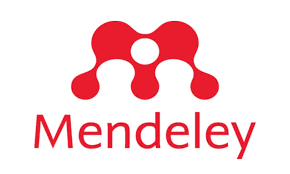MENU
Focus & Scope Editorial Team Reviewer Author Guidelines Peer Review Process Publication Ethics Online Submissions Copyright and License Plagiarism Screening Indexing Author Fees Open Access Policy TEMPLATE


TOOLS

INDEXING
Instructions for the Jurnal Kedokteran Universitas Palangka Raya Articles Contributors
Manuscripts should be compiled in the following order: title, author's name (without academic degree); Abstract (in English, maximum 300 words); Keywords; introduction (containing the background and purpose or scope of the article); Literature Review (Optional); Method; Result and discussion; Tables and Figures; conclusion; references.
a. Title and Abstract.
The title and the abstract are key elements that inform the reader of the contents of the manuscript. A title will capture the reader’s attention and clearly inform the reader of the contents within.
The abstract should briefly describe the objectives of the research, the results achieved, and the major conclusions. You should give special emphasis to the novelty of your research. The abstract should not contain any undefined abbreviations references. Also avoid introductory remarks, details of the method (e.g. the method has been used for many decades successfully) or listing your results. Abstract should be ended with a comment about the importance of the results or conclusions brief. Abstract should not be more than 300 words, with 2-3 Keywords.
b. Introduction
Introduce the subject, summarize the fundamentals necessary to understand the paper, and define the problem. Discuss the latest publications in the same field in detail. State the objectives of your paper. The Introduction is NOT an extended version of the Abstract; never use the same sentences in both sections.
All citation references made in the publication text should be displayed as a list of references that follow the text. Manuscripts should be checked carefully to ensure that the quotation in the text is complete following the rules of JKUPR.
The references must be sorted by the order of reference in the text. Authors are advised to use a managerial reference application Mendeley or Zotero, etc.
c. Literature Review (Optional).
In reviewing the research literature, the author’s task is to indicate the main directions taken by workers in the area and the main issues of methodology and interpretation that have arisen. Particular attention must be given to a critical analysis of previous methodology and the exposition of the advantages and limitations inherent in various alternatives. Close attention must be given to conceptual and theoretical formulations that are explicit or implicit within the selected studies.
d. Method
The method of research is the procedure owned and done by researchers in order to collect information or data and investigate the data that has been obtained. The research method gives an overview of the research design which includes among others: the procedure or steps to be taken, the time of the research, the data source, and in what way the data is obtained and then processed and analyzed.
e. Result and Discussion.
The results section should include a summary of the collected data and analyses, which follows from the analytic plan. All results should be described, including unexpected findings. Authors should include both descriptive statistics and test of significance.
In the discussion session, the writers evaluate and interpret the findings. This section should begin with a statement of support or nonsupport for the original hypotheses in light of the findings. If the hypotheses were not supported, the author considers post hoc explanations. In interpreting the results, authors consider sources of bias and other threats to internal validity, imprecision of measures, overall number of tests, or overlap among tests, effect sizes, and other weaknesses of the study.
f. Conclusion
In Conclusions you should not repeat sentences from the Abstract, Introduction, and the Results sections. It should summarize the most important results, their novelty advantages, and limitations. Here you may also mention planned future work and/or recommendations to others.
g. Tables and Figures.
Table and figures are particularly valuable for conveying large amounts of information and for showing relationships among data. However, tables and figures should be kept to a minimum and contain only essential data. All diagrams, charts, and graphs should be referred to as figures. It is the authors’ responsibility to make sure to obtain permissions to display tables and figures from third parties.
h. References
Journal:
Prasetya, M.R., Koesdarto, S., Lastuti, N.D.R., Suwanti, L.T., Kusnoto, Yunus, M. Study on the Morphology of Fasciola gigantica and Economic Losses due to Fasciolosis in Berau, East Kalimantan. J Biol dan Biol Educ. 2019;11(1):156–61. doi: 10.1027/s11428-009-0383-5
Book:
Carlson BM. Human embryology and developmental biology. 4th ed. St. Louis: Mosby; 2009. 541 p.
Gilstrap LC 3rd, Cunningham FG, VanDordten JP, Editors. Operative obstetrics. 2nded. New York: McGraw-Hill;2002.
Advanced Life Support Group. Acute medical emergencies: the practical approach. London: BMJ Books; 2001. 454p.
Chapter book :
Meltzer PS, Kallionemi A, Trent JM. Chromosome alterations in human solid tumors. In: Vogelstein B, Kinzler KW, editors. The genetic basic of human cancer. New York: McGraw-Hill;2002.p. 93-113.
Prosiding:
Howe B, Lee P, Grechkin M, Yang ST, West JD. Deep mapping of the visual literature. In: Proceedings of the 26th International Conference on World Wide Web Companion [Internet]; 2017 Apr 3-7; Perth, Australia. Geneva; International World Wide Web Conferences Steering Committee; 2017 [cited 2021 Aug 12]; p. 1273–7. Available from: ACM Digital Library doi:10.1145/3041021.3053065
Publisher:
Fakultas Kedokteran, Universitas Palangka Raya

Jurnal Kedokteran Universitas Palangka Raya is licensed under a Creative Commons Attribution-NonCommercial-ShareAlike 4.0 International
